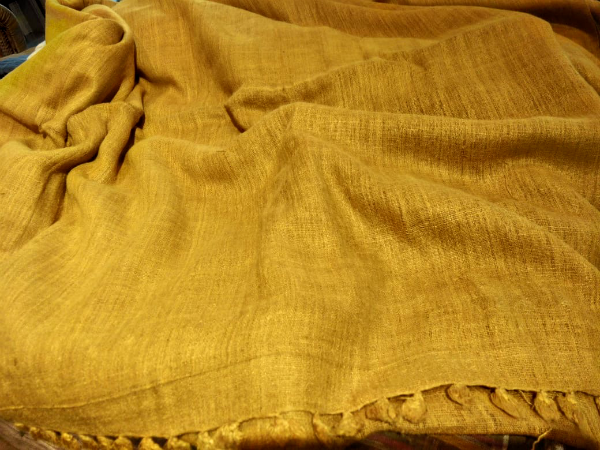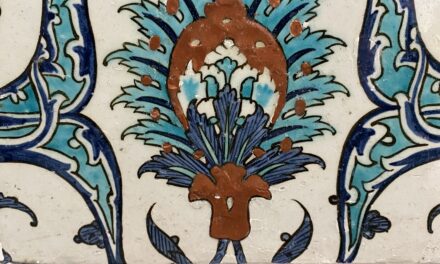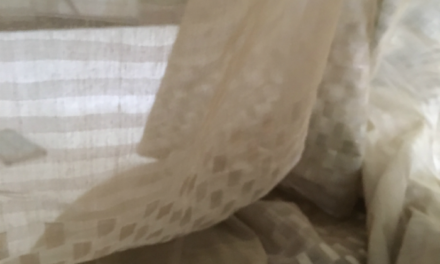Six yards, five and a half metres, sometimes nine yards, of material. You have to wrap it around yourself. Tuck here, tuck there, make the pleats, hold the pallu in place. It must be so difficult. one must sit still or move around in luxury cars or palanquins if one is in a saree.
Yet a saree has never demanded that. Not really, not ever. In fact, if your palanquin is late, you can simply hitch up your saree a little and jump onto a bus.
If the day is windy and the pallu flies, refusing to stay in place, you could hum a romantic song to yourself, or if not in a frothy mood, grab it none too gently and tuck it into the waist band of the petticoat, and carry on with your life. it won’t mind.
Or if you’re at a wedding, your saree stylishly sweeping the floor, your pallu long and glittering with zaree and sequins, and someone drops food on it, after the initial shock and the desire to throttle that someone, you can grab a jug of water from the waiter passing by and clean up, then deftly adjust your saree, so the stain is hidden by a pristine swathe of glimmer.
An image stays in the mind. a row of women in brightly coloured, well-worn sarees balancing muddy platters on their heads piled with cement, sand, and other building materials, walking confidently around a construction site.
Across India, women working in construction sites, going about their arduous day in mill printed cotton sarees and other hardy weaves. Sometimes with their heads covered, because tradition demands it or perhaps because it guards them against the glare of the sun. Really, how do these women manage? I can’t stop marveling.
The vegetable vendor hawking her fresh greens wears it, the cook grumbling about her low wage wears it, the cleaner, the part time bai, the goddess; city women wear it as do women in villages; movie stars drape it, farm workers wrap it, even school girls tuck it in every morning (had I stayed on in Gokhale Memorial Girls’ School, it would have been uniform Class IX onward). The saree is everywhere, and perhaps that’s precisely why one doesn’t take note of it, barely notice it. A bit like oxygen.
My mother graduated from frock to saree when she was thirteen. If you think that means she belonged to a conservative family, not really. Saree was a sign of growing up maybe but not always an indication that you’d be house bound and restricted now on. All of her and my aunt’s class cutting from college to watch Hindi movies was done in sarees. They took a bus from Delhi University to Connaught Place I am sure… most movie theatres were in that posh part of town, the commercial district of Lutyens’ Delhi, in the mid to late fifties. and my aunt was very fashionable, so it couldn’t have been sturdy cottons only riding those crowded buses.
A saree is ultimately a length of fabric, which you can twist, turn, tuck, pleat, wear as you’d like to, need to, want to. It’s interactive. it’s flexible. It lets you decide.
And women across different cultures and backgrounds, over time, have done precisely that. there are over a hundred ways of wearing a saree. This has been researched and documented. what’s perhaps not documented is that we, each one of us, have our own little take, our own touches and fixes to get the look we want.
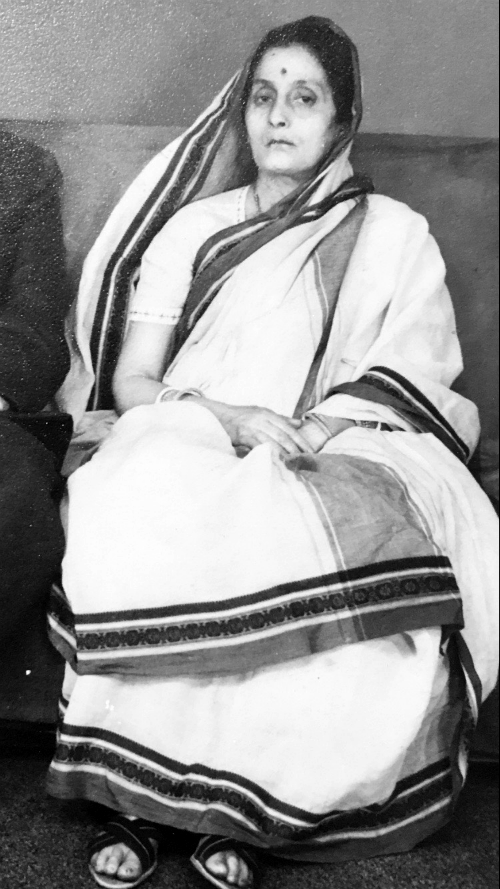
My grandmothers and great aunts wore their sarees in the traditional Bengali manner, with broad pleats tucked at the waist, a swirl of cloth about the upper body, over this shoulder and that, leaving only the arms visible. One part of the cloth could be easily pulled up and drawn over the head to cover it, as and when needed. The more modern grandmother switched to the current popular style when she went out.
This style – which is perhaps the most familiar look of the saree nowadays, immediately springing to mind when we hear the word – came about gradually during the Bengal Renaissance period between the 1860s and the early 1900s. Along with new thinking in art, education, politics, society, religion, a change in the way fifty percent of the population dressed. Naturally, it didn’t happen in a day, but by and by, slowly yet surely, the new drape gained currency.
The British had a hand in this too. Managing India, so they could maximise their gains, led to among other things, the creation of the Indian Civil Service (initially known as the Imperial Civil Service)… the highly prestigious ICS. They deigned to allow a few Indians into this elite cadre. Many of the Indian ICS officers were Bengalis, since the Brits ruled for nearly a hundred and fifty years from Calcutta. They belonged to eminent families, qualifying for the ICS was considered quite an achievement, a reflection of your education, class, intellect. Even Netaji Subhash Bose took the ICS exams i just found out. He stood fourth, however didn’t join as he had no wish to serve the colonial government. But what’s all that got to do with the saree?
Well, the wives of the ICS officers were expected to attend social events and parties along with their husbands. This posed a problem. For before that, women of wealthy, upper class families stayed indoors, they didn’t go out and mingle freely with men. It was the custom in Bengal, for women, aristocratic or otherwise, to don their saree in that matter of fact way i mentioned earlier, without a blouse. No blouse? The dear Queen, had she heard of it, must have been most unamused. Thoughts of smelling salt from my Georgette Heyer reading days swirl in the mind. I am giggling as I imagine the imbroglio… on both sides of the story. Our patriarchal men would have been most perturbed by the whole thing, deep discussions on Shastra and what is the world coming to must have rumbled across the mansions and rajbaris of the great metropolis of the east. Wonder what the women thought. Anyway, bottom line, this would simply not do if one had to step out of the purdah, or palanquin, and meet members of the opposite sex.
And so came along the need for a saree drape that addressed all modesty issues and looked pretty and compatible – perhaps even competed – with the gowns of the European women. The saree found a new look, while a shirt-like blouse, with frills and lace, and a petticoat or underskirt became part of the ensemble.
The new drape was a culmination of ideas and accents from several women. First among them: Jnanadanandi Devi. Rabindranath Tagore’s brother Satyendranath was the first Indian ICS officer. His wife, Jnanadananidi, was a woman with a say in things if I am to believe film portrayals. When she went to live in Bombay with her husband, she was impressed with the “Bombay dastur,” or the style in which the chic Parsi ladies wore their gorgeous china-made garas with jackets and petticoats. It was a take on the traditional Gujarati style of wearing a saree with the pallu, the free end, in front. Fleeing persecution, the Zoroastrians or Parsis had sought and found refuge in Gujarat from around the eighth century to the tenth. In time, the women began wearing the saree or gara, draping it it the Gujarati way, adding their own spin on it.
Jnanadanandini modified it and drew the saree across the bosom, letting it cover the upper body with pleats at the front, then dropped the pallu over the left shoulder to the back, only to bring it up again under the right shoulder. It left the right hand “free for courtesies” says wiki. This became popular and was known as, if I’m not wrong, the “Brahmika saree.” The more progressive and educated Brahmo women adopted it initially, wearing tailored blouses and petticoats with their sarees.
In the classic movie “Sahib Bibi aur Ghulam”, set in late nineteenth century Bengal, the beautiful and tragic Chhoti Bahu (Meena Kumari) is unforgettable in her shadha sheedhe sarees and glittering jewellery, and the fiery Jaba (Waheeda Rehman), a young Brahmo woman who is almost an antithesis to Chhoti Bahu, wears her saree in the modern style, equally memorable. Two completely different worlds and mindsets joined by a piece of cloth.
Jnanadanandini Devi did not, however, add the swishing array of narrow pleats that drop from the waist to the ground in front, allowing for longer strides and easy mobility. That came later with Suniti Devi, the Maharani of Cooch Behar. It was this addition that set the saree seriously on the path to its modern silhouette.
That final touch by the daughter of philosopher, reformer, and Brahmo leader Keshub Chandra Sen, could it have come originally from an ancient unknown woman lost in history? The sculptures in centuries old temples show unstitched garments with those fishtail-like pleats on queens, apsaras, attendants, everyday women, and of course, goddesses.
The altered drape would not only let women go out and be part of the upper crust social set, but seen as a sign of modernity, it would be adopted by the growing middle class in cities. And some day not too far away, it would adorn many of the women who’d march against British rule, in India’s fascinating independence movement.
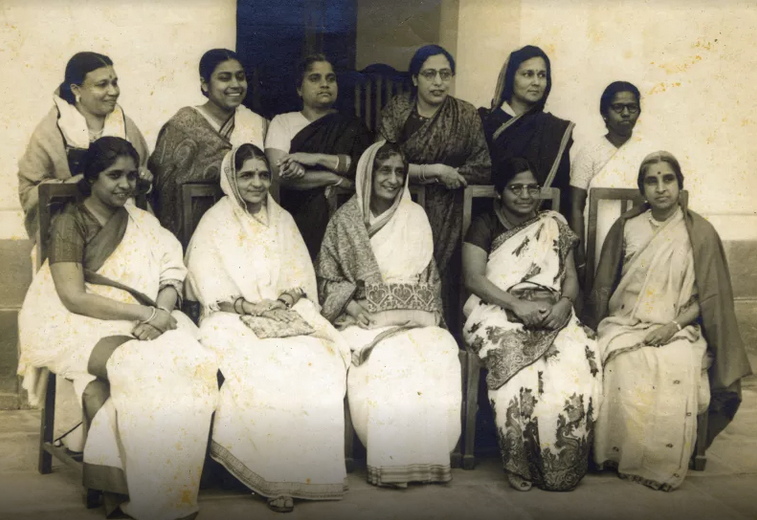
There’s no tyranny of style here, however. Even as the modern drape – often called the Nivi style, which has its origin some say, in a style from Andhra Pradesh – got accepted, the older norms stayed alive. Those many ways of wearing your saree. Gujarati seedha pallu; Bengali aatpoure or shadha sheedhe (plain and simple), as my grandmothers called it; the Coorg style with pleats at the back; the looped-between-the-legs Nauvari of Maharashtra; interesting pleat and pallu arrangements of Madurai; the Kachhora drape of Chhattisgarh tribals; the Santhal style; Andhra, Tamil Nadu, Kerala, Assam, Punjab, Odissa, Rajasthan… there are saree drapes from everywhere, sometimes several of them. A blouse was added on at times, or a petticoat, but it really all depended on the saree wearer’s need, her comfort, her way of life.
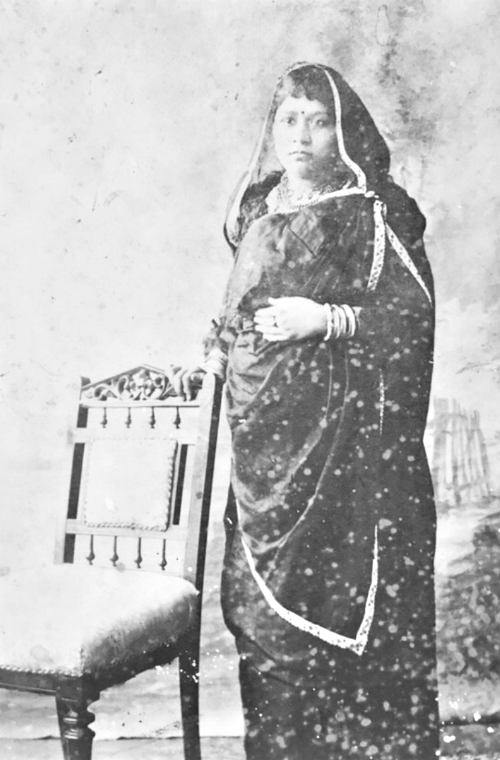
The cook in Kolkata and the part time maid, had a no-nonsense way of winding the yards tightly around themselves, no flyaway loose ends, no sweeping the floor length. It was the busy working woman’s drape.
For some reason, Mrinmoyee in Satyajit Ray’s “Samapti” and Durga in his “Pather Panchali” come to mind, How everyday sarees were in a girl’s life. Not getting in the way of scampering about woods, or running through open meadows covered in Kash.
I am no newcomer to the saree, it’s always been there; yet, it was only the other day that it struck me the design of a saree is pretty neat. While it looks elaborate and perhaps even fussy in a world of stitched garments that can be slipped on easily, and have a cut and look that’s static, the saree in fact is fluid and amenable in ways most clothes aren’t.
From the plainest to the most ornate and delicate, there’s a hearty can do spirit in it. It can handle situations, it’s happy to deal with life. Floating through the saree’s skein of pliable yarn is an undertow of grit, of determination to tackle the day. And of freedom.
Which is why, you’ll notice, every now and then, there’s change. A new twist, a new turn. A new generation finds its own relationship with the saree. My daughter isn’t rolling her eyes because iIve suggested a saree for her graduation ceremony. She’s chosen a plain yellow one, from Assam, handspun Eri yarn, handloom. She wants to pair it with a blue blouse. The blouse will definitely not look like one of mine. She’s going to wear the saree most likely tied a little higher, coming down only till the ankles, her pallu not as snugly pulled over the upper body as i wear it, and with her favourite black high heel boots.
We are many moons past Jnanadanandini and Suniti Devi’s sensibilities. The sculptures on our temple walls are perhaps wishing they had today’s beautiful blouses to cover their bare torsos. Someone’s adjusting and tucking the pleats of her saree somewhere. a pallu is dropping over the shoulder… mother, grandmother, great grandmother, great great grandmother, great great great-. How does a piece of fabric shimmy so blithely through so much time?
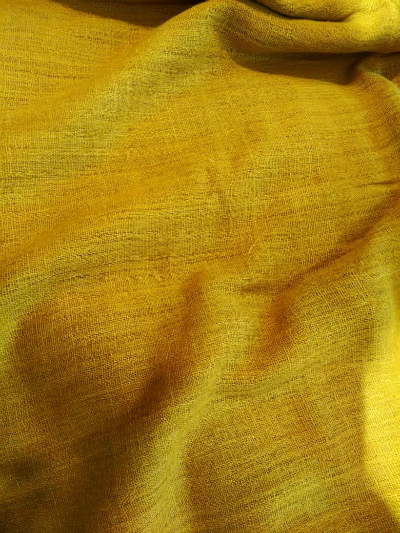
i feel a tug. must wear sarees more often i think. But I am in one, I realise the next instant. It’s friday, and these days, I wear a saree for Shabbat, the weekly Jewish observance at our home. Today, it’s a dressy kKnjeevaram silk with zaree.
There’s a yell from the kitchen. I lift the saree up a bit and rush across. Blood all over the floor, worried faces, the cook has cut her hand. I pull the pleats up and tuck a bit into the petticoat, the pallu of my expensive but not snooty saree is twisted and goes around my waist. Time to get to work.
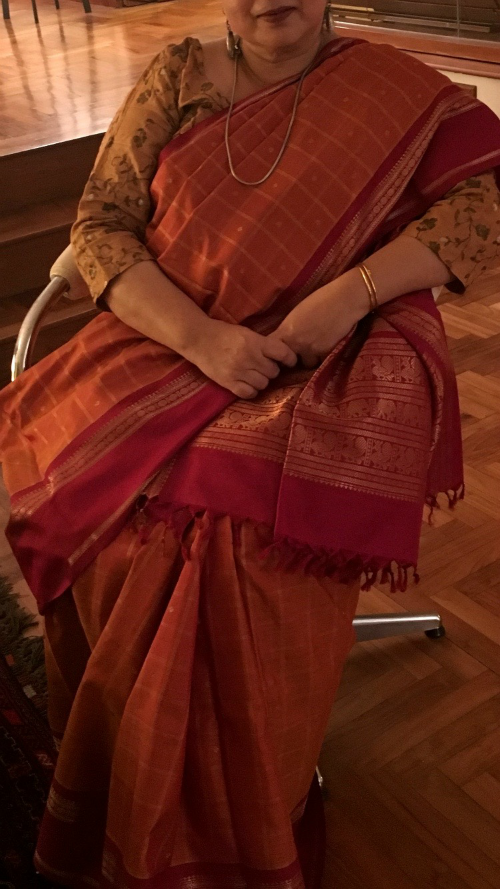
Referred to material from this Economic Times article, the Wiki page on Jnanadanadini Devi and an article in The Statesman on the ICS.
………………………………………………………………………………………………………………
I am interested in sarees; from their weave, their origins, their cultural stories to their vast range and utter beauty. I write a series on different kinds of sarees.
Sarees Tell Stories | Brushed orange and maroon Kanjeevaram from Delhi Nalli’s, circa 2015; yellow Eri from Kohua d’handloom Cafe, Guwahati, 2019

